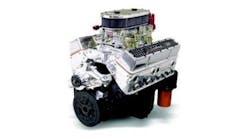In 1981, the editors of American Machinist noted in a special report that the Committee on Computer-Aided Manufacturing was being brought to an end.
The committee had been formed in the 1970s at the request of the U.S. Air Force Systems Command to review the Air Force's Integrated Computer-Aided Manufacturing program. As the committee was being disbanded, three CAM authorities were asked to report on worldwide developments and to provide views of how CAM was being implemented in western Europe, in the countries that were then known as the Soviet bloc, and in Asia - primarily Japan.
In their report, the three experts described the worldwide implementation of CAM as accelerating, but that each region had different considerations for adopting the technology.
In Japan, the authors saw CAM projects being more advanced and far-reaching than in the other parts of the world. Japan's adoption of CAM projects was seen as very bold, and based on the availability of long-term financing from Japan's banks. Meanwhile, the implementation of CAM in western Europe was seen as an evolutionary trend, as European manufacturers placed their attention on the return they would get for the investment in the technology. In eastern Europe, manufacturers were seen to adopt CAM to maintain a competitive position in light of shortages of skilled labor that they faced.
One forecast issued by the committee in 1981 suggested that CAM increasingly would rely on resource-and energy-saving systems designed to complete highly complicated tasks, and flexible enough to be used to produce a variety of products.
Flexibility was a central concept envisioned for the future of CAM, and it was seen as a manufacturing concept that would be disseminated through industries around the world. At the time, the committee noted that CAM systems were a "virtual monopoly" held by the very large corporations, but that it would become increasingly effective as a tool used by smaller companies.
One of the needed technologies noted by the committee in 1981 would be advancements in computer technologies that would play an important role in making CAM available and accessible to a larger number of manufacturing companies on a worldwide basis.
